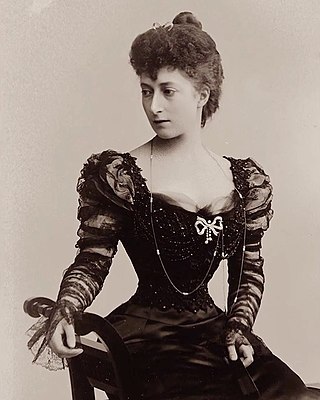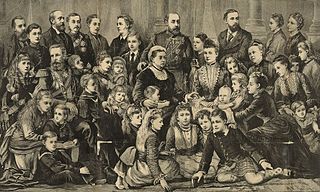
1701 (MDCCI) was a common year starting on Saturday of the Gregorian calendar and a common year starting on Wednesday of the Julian calendar, the 1701st year of the Common Era (CE) and Anno Domini (AD) designations, the 701st year of the 2nd millennium, the 1st year of the 18th century, and the 2nd year of the 1700s decade. As of the start of 1701, the Gregorian calendar was 11 days ahead of the Julian calendar, which remained in localized use until 1923.

Alexandra of Denmark was Queen of the United Kingdom and the British Dominions, and Empress of India, from 22 January 1901 to 6 May 1910 as the wife of Edward VII.

Frederick VIII was King of Denmark from 29 January 1906 until his death in 1912.

Maud of Wales was Queen of Norway as the wife of King Haakon VII. The youngest daughter of King Edward VII and Queen Alexandra of the United Kingdom, she was known as Princess Maud of Wales before her marriage, as her father was the Prince of Wales at the time.

Princess Thyra of Denmark was the youngest daughter and fifth child of Christian IX of Denmark and Louise of Hesse-Kassel. In 1878, she married Ernest Augustus, the exiled heir to the Kingdom of Hanover. As the Kingdom of Hanover had been annexed by Prussia in 1866, she spent most of her life in exile with her husband in Austria.
Events from the year 1831 in art.
Events from the year 1772 in art.

The Royal Burial Ground is a cemetery used by the British royal family. Consecrated on 23 October 1928 by the Bishop of Oxford, it is adjacent to the Royal Mausoleum, which was built in 1862 to house the tomb of Queen Victoria and Prince Albert. The burial ground lies on the Frogmore estate within the Home Park at Windsor, in the English county of Berkshire.

Queen Victoria, the British monarch from 1837 to 1901, and Prince Albert had 9 children, 42 grandchildren, and 87 great-grandchildren. Victoria was called the "grandmother of Europe".

The monarchy of Denmark is a constitutional institution and a historic office of the Kingdom of Denmark. The Kingdom includes Denmark proper and the autonomous territories of the Faroe Islands and Greenland. The Kingdom of Denmark was already consolidated in the 8th century, whose rulers are consistently referred to in Frankish sources as "kings". Under the rule of King Gudfred in 804 the Kingdom may have included all the major provinces of medieval Denmark.

St George's Chapel at Windsor Castle in England is a castle chapel built in the late-medieval Perpendicular Gothic style. It is a Royal Peculiar, and the Chapel of the Order of the Garter. St George's Chapel was founded in the 14th century by King Edward III and extensively enlarged in the late 15th century. It is located in the Lower Ward of the castle.
Events from the year 1912 in Denmark.
Events from the year 1842 in Denmark.
Events from the year 1852 in Denmark.
Events from the year 1863 in Denmark.
Events from the year 1869 in Denmark.
Events from the year 1874 in Denmark.
Events from the year 1770 in Denmark.

Christian IX of Denmark ruled Denmark from 1863 to 1906. Known as the "father-in-law of Europe", he and his wife, Louise of Hesse-Kassel, became the ancestors of many members of European royalty. Some of these descendants would play a role in the history of several European countries, including Greece, Russia, and the United Kingdom. This article describes the children, grandchildren, and great-grandchildren of Christian and Louise.











